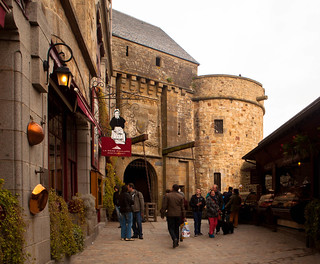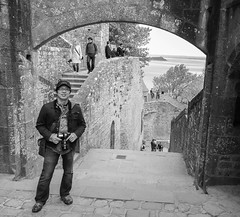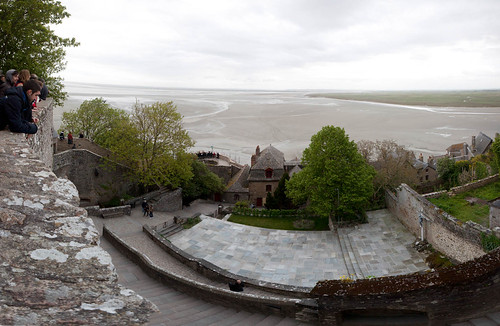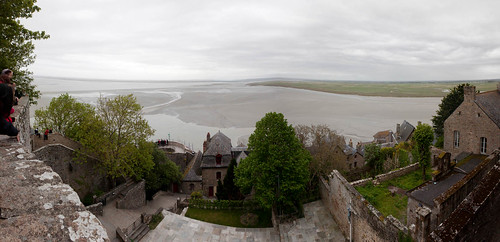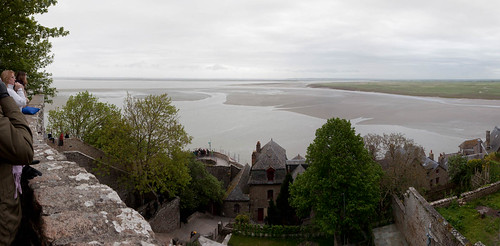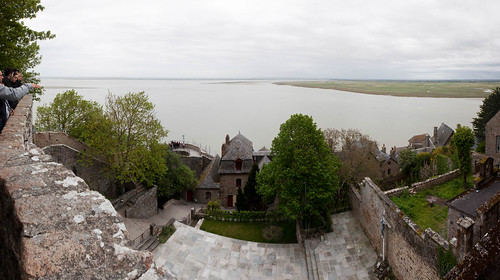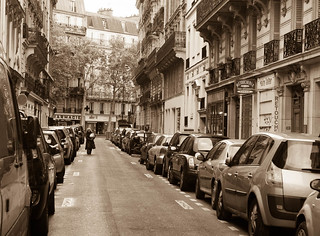Happy Memorial Day in the USA! Normally I think of the summer and barbecuing on Memorial Day. But today is cold and rainy. And my France experience is still on my mind. It's only fitting that I write about Normandy and its WWII D-Day sites today. Visiting these places certainly made me remember and honor those of us who have served for our countries.
The Normandy coast sits on the English Channel. England is directly north. Although it's not the closest place in France from England (Calais is), the Allies chose Normandy as its target for the D-Day invasion. Five areas of coastline (known as Utah, Omaha, Gold, Juno, and Sword Beaches), were the landing points for the Allied troops. For the rest of the story, go watch Saving Private Ryan :)
Normandy Coast Towns
The drive along the Normandy coast was relaxing. There are a bunch of small seaside fishing towns. Each one had some kind of memorial or museum dedicated to WWII. I don't remember all the towns we went through, but it was all nice. Too bad it was cold and rainy that day. I would have enjoyed sitting on a pier and eating some seafood...
Perhaps the best scenic view of the Normandy coast was at Arromanches, pictured above. Cliffs overlook the town on both sides, so you can get a great view. There's a memorial/museum area here too. Arromanches was the site of the WWII Mulberry Harbor, a portable temporary harbor built by the Allies to unload troops and supplies in order to win Europe back from the Nazis. In the photo, the four objects in the water are remnants of the Mulberry Harbor. There are some great WWII photos of the harbor in the museum onsite and on the internet (follow the link above).
Omaha Beach
When it comes to D-Day, Americans probably remember Omaha Beach the most. Unlike the other beaches which were fairly easy to overtake, Omaha Beach was nasty. It overlooked bluffs rising up to 150 ft. German fortifications covered the beach. Needless to say, thousands of people died on those beaches that day. Once again, refer to Saving Private Ryan for more detail - its Omaha Beach invasion scene was amazing.
Today, there isn't much to see at Omaha Beach. The area is a big memorial park now. Almost all the fortifications are gone. If you walk out a bit, you can see some bomb craters and perhaps a few remnants of the battle.
The main thing to see at Omaha Beach is the American Cemetery. About 10,000 soldiers are buried here. Makes you think about life a bit when you visit. Thanks again to all those who have served.
It's crazy to think that the Nazis had a good chance of defeating the Brits and conquering all of Europe. I was born a couple generations later, so the feeling wasn't the same as those who lived through it. But seeing a few things sends a shiver down your spine. On this trip, we had a long layover in Berlin and visited some of the landmarks there too. They have a nice outdoor exhibit on the rise of the Nazi party in Germany. And below is the Holocaust Memorial in Berlin - a tribute to the millions of Jews who were systematically persecuted and murdered by the Nazis.
Caen
There are a few bigger cities in the Normandy area. One of them is Caen. We stayed at a hotel there. Caen was a major site in WWII during the Battle for Normandy (which started on D-Day). A significant portion of Caen was destroyed and was later rebuilt. However, the medieval core of the city remains intact. Below is the Chateau de Caen, or Caen Castle. It was built by William the Conqueror, who led the Norman invasion to conquer England in 1066. Across the street is the Church of St. Pierre, located across the street from the castle. There are a few other churches you should see if you go there - Abbaye aux Hommes and Abbaye aux Dames - but we got lost and couldn't find a parking spot....



